When it comes to digital space, we can safely state that the last couple of years have been a time of great change - and the ones to come will follow the same trend. Technologies such as cloud, mobile solutions, big data, and analytics, which were once at the forefront of many industries, have become commonplace. And most recently, artificial intelligence, extended reality, and the metaverse are being perceived as the new game changers.
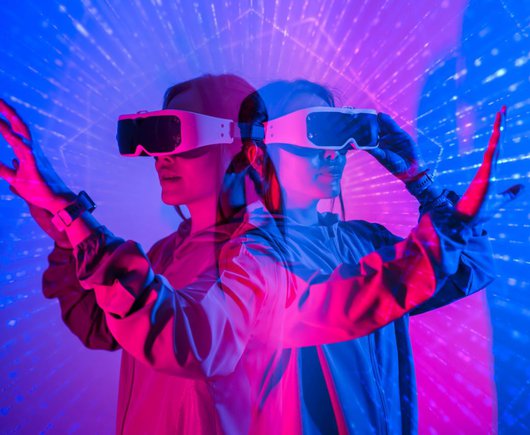
Promoting sustainability with Virtual Reality gaming
Immersive technologies like augmented and virtual reality are starting to gain ground in some of the most dynamic and flourishing industries, gaming included. Although for some using such technologies for gaming purposes might feel like we are not fully taking advantage of their potential, VR can enhance the user experience by transporting players in real-time into new environments and making them feel part of the action as realistically as possible.
Furthermore, apart from having fun and enjoying the benefits of cutting-edge capabilities, a VR game can also be used as a tool to raise awareness in certain key matters, especially if you are addressing a digital-savvy public.
Recently we have partnered with VNG International to support their Municipalities4GlobalGoals campaign whose main purpose is to promote sustainable cities and communities. Together we designed a VR game-like experience to raise awareness of what constitutes sustainable behavior and what actions local governments could take to encourage and facilitate such behaviors.
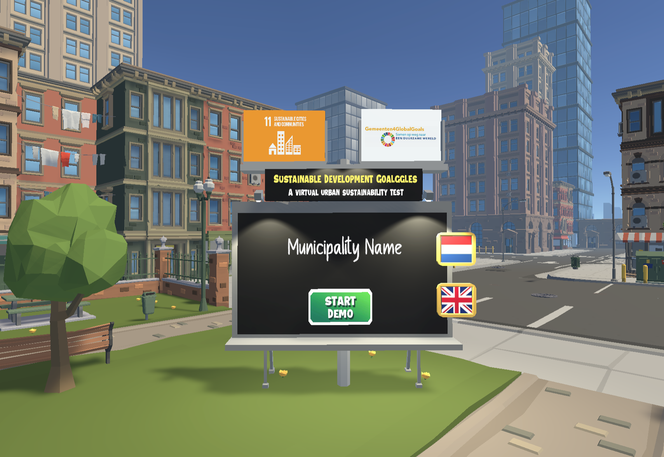
The Sustainable Development Goalggles product allows municipalities to distinguish between actions and situations that either support or hinder sustainability, ethical manners, race and gender diversity, etc. The final purpose of this is to spark discussions about the blind spots that might exist and what can be done to reach the goal of having sustainable cities and communities.
The game is developed for Oculus Quest 2, and once a person puts the headset on, they are transported into a virtual city-like environment.
The main area contains different smaller scenes (imagine it like seeing a large park or market square from different viewpoints/corners), and each displays certain behaviors or facts that support sustainability and some behaviors that make it difficult to reach a sustainable life. The player must identify and point out the ‘less sustainable’ ones from the scenes.
Each smaller environment includes vegetation, people walking or doing certain activities as well as transportation means which may or may not be sustainable. The scenes are quite colorful and have a lot of nice 3D animations. Every game element aims to promote gender and race diversity, equity, and equality.
To better understand the scenarios tackled in the game, think of your favorite part of the city as being all green – both as vegetation included and as nature-friendly elements such as electric transportation, air-quality measurement equipment, large spaces for walking, and less traffic. In comparison, imagine you are doing your Sunday walk in the same place, packed with loud cars, old polluting buses, a lot of concrete, and only small dry patches of grass. Which of the two examples has the best chance of supporting the development of a nice, sustainable community?
To make things interesting, the game also has a scoring system, so each player can see their position amongst other players and, more importantly, reflect on their sustainability awareness level in case they have a smaller score. Often, citizens or municipality employees can have blind spots when it comes to promoting and sustaining a healthy and viable development of cities and communities, so it is good to be reminded of what can be done.
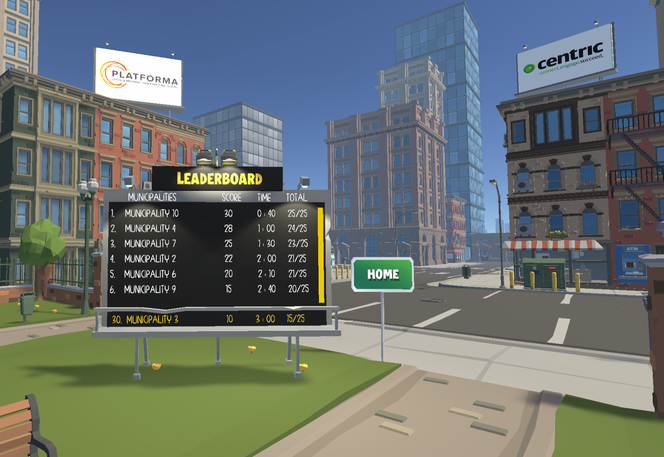
Working on creating this product was a great experience for us, as we strongly believe in sustainability and raising awareness on this matter, but also because we had the chance to create a cool game.
Faced with a tight deadline and high expectations, we had to think fast and organize even faster. Together with the team in Romania and with the help of our colleagues from Centric Netherlands, we drew a weekly planning calendar with clear and manageable goals, resources needed, and key persons for each area - UI/UX and 3D modeling, development, project, and product management.
We consulted with the client and presented the progress on a weekly basis, and after a month and a half, we had an amazing game that was demoed during an important event in the Netherlands where municipality employees had the chance to test their sustainability knowledge by identifying the correct scenarios.
Team members enjoyed collaborating and putting their creativity and XR knowledge to good use in designing the best and most immersive experience. As a result, the product we delivered was very well received by the client. They gave us a nice surprise by sending a thoughtful video sharing the pleasant experience of working with us, and the excitement felt while enjoying the quality and level of detail of the game.
Although VR technologies are far from being new, interest and application on a larger scale for such technologies are just beginning to soar. With some saying VR still seems far from mainstream technology, we are doing our best to break new barriers by showing that XR can be both catchy and utilitarian if applied in the proper context and for the right audience.
Stay tuned for the next exciting work we do at Centric in the XR team!
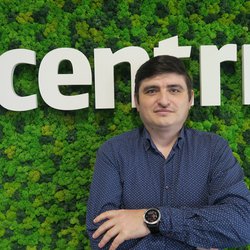
Contact Us!
Andrei Dobjenschi, Software Development Manager
If you wish to know more about this adventure, contact Andrei by email at andrei.dobjenschi@centric.eu or by phone at +40720012220.
XR @ Centric
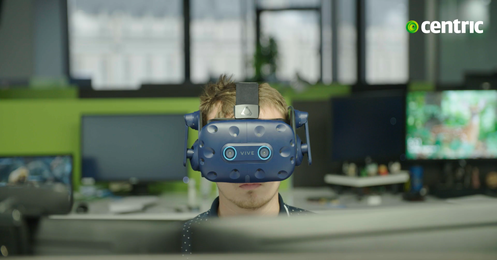
XR Development